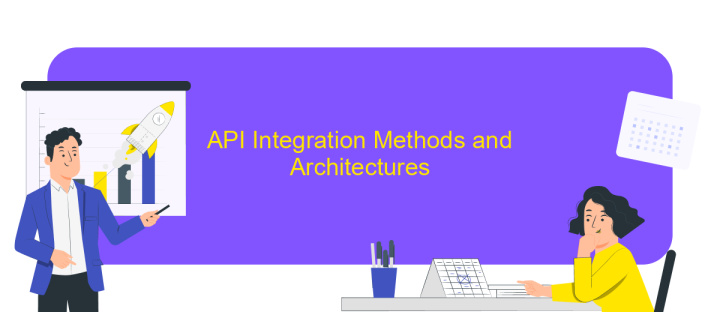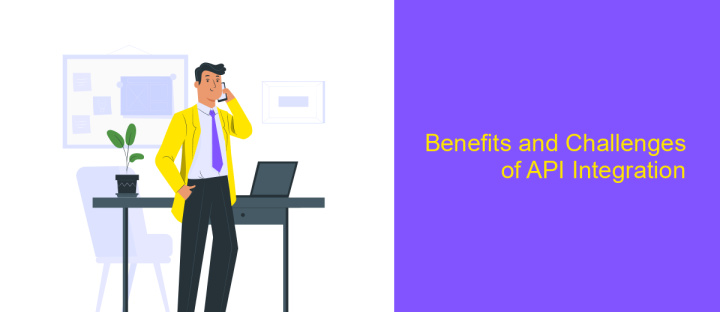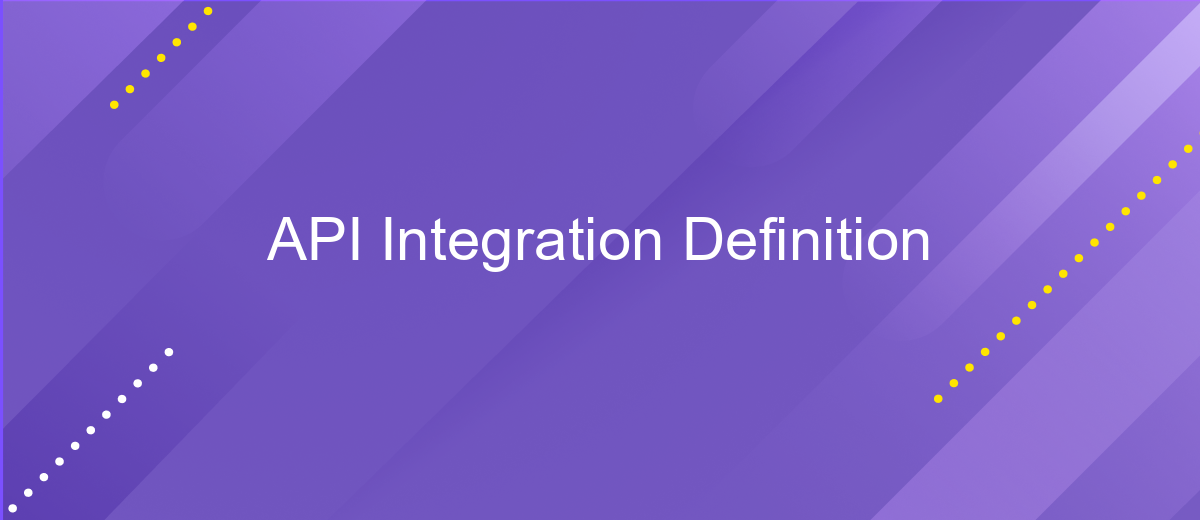API Integration Definition
API integration refers to the seamless connectivity between different software applications, allowing them to communicate and share data efficiently. In today's digital landscape, API integration is crucial for businesses to enhance their operational capabilities, improve user experiences, and streamline workflows. By enabling disparate systems to work together, API integration empowers organizations to leverage the full potential of their technological investments, driving innovation and growth.
What is API Integration?
API Integration refers to the process of connecting different software applications or systems using Application Programming Interfaces (APIs). This integration allows for seamless communication and data exchange between applications, enabling them to work together efficiently. By leveraging APIs, businesses can automate workflows, enhance functionality, and provide a more cohesive user experience.
- Streamlined data sharing: Facilitates the exchange of data between applications without manual intervention.
- Improved efficiency: Automates repetitive tasks, reducing the need for manual input and minimizing errors.
- Enhanced functionality: Expands the capabilities of existing applications by integrating third-party services.
- Scalability: Easily adapts to growing business needs by integrating additional APIs as required.
- Cost-effectiveness: Reduces development time and resources by utilizing existing APIs instead of building new solutions from scratch.
In today's digital landscape, API Integration is crucial for businesses looking to stay competitive and innovative. It enables organizations to leverage the best features of various applications, creating a more interconnected and efficient ecosystem. As a result, businesses can respond more quickly to market demands and provide superior services to their customers.
Key Concepts and Terminology

API integration involves connecting different software applications to enable them to communicate and share data seamlessly. A fundamental concept in API integration is the Application Programming Interface (API) itself, which serves as a set of rules and protocols for building and interacting with software applications. APIs act as intermediaries that allow various software components to interface with each other, facilitating efficient data exchange and functionality extension. Key terminology includes endpoints, which are specific paths or URLs where APIs can access resources, and requests and responses, which are the communication messages sent and received between systems.
Another important aspect is authentication and authorization, ensuring secure access to APIs by verifying user credentials and permissions. Tools like ApiX-Drive simplify the integration process by providing a platform to connect multiple applications without extensive coding. ApiX-Drive enables users to automate workflows by linking various services, thereby enhancing productivity and reducing manual work. Understanding these concepts and utilizing integration platforms can significantly streamline operations, making it easier to manage data flow across different systems.
API Integration Methods and Architectures

API integration is a critical component in modern software development, enabling diverse systems to communicate and share data seamlessly. Various methods and architectures can be employed to achieve effective API integration, each offering unique benefits and challenges. Understanding these approaches is essential for selecting the right strategy based on specific project requirements and constraints.
- RESTful APIs: Representational State Transfer (REST) is a widely used architectural style that leverages HTTP protocols, making it ideal for web-based applications.
- SOAP APIs: Simple Object Access Protocol (SOAP) is a protocol-based approach that provides robust security and transaction compliance, often used in enterprise environments.
- GraphQL: A query language for APIs, GraphQL allows clients to request only the data they need, offering flexibility and efficiency.
- Webhooks: These provide real-time data updates by sending HTTP POST requests to a specified URL when an event occurs.
- gRPC: An open-source RPC framework that uses HTTP/2 for transport, enabling efficient communication between services.
Choosing the right API integration method and architecture depends on factors such as the nature of the application, performance requirements, and security considerations. Each approach offers distinct advantages, and understanding these can guide developers in creating robust, scalable, and efficient systems.
Benefits and Challenges of API Integration

API integration has become a cornerstone for modern businesses, offering seamless connectivity between applications and services. By allowing different software systems to communicate, API integration enhances functionality, streamlines processes, and enables innovative solutions. It facilitates data exchange, leading to improved efficiency and more informed decision-making.
Despite its numerous advantages, API integration presents several challenges. Compatibility issues can arise when integrating APIs from different providers, often requiring significant customization. Security concerns also play a critical role, as APIs can be potential entry points for cyber threats if not properly secured. Additionally, managing multiple APIs can become complex, necessitating robust monitoring and maintenance strategies.
- Enhanced connectivity and interoperability
- Improved efficiency and automation
- Potential security vulnerabilities
- Complexity in management and maintenance
In conclusion, while API integration offers significant benefits such as increased efficiency and innovation, it also brings challenges that require careful consideration. Addressing compatibility, security, and management issues is crucial for successful API integration. Companies must weigh these factors to harness the full potential of APIs, ensuring that their integration strategies align with their overall business objectives.


Best Practices and Considerations for API Integration
When integrating APIs, it is crucial to prioritize security by implementing robust authentication and authorization methods. Ensure that sensitive data is encrypted during transmission and stored securely. Additionally, always validate and sanitize inputs to prevent injection attacks. Version control is another best practice, allowing for smooth transitions and backward compatibility when APIs are updated. Clear and comprehensive documentation is essential for developers to understand and effectively utilize the API, reducing the likelihood of errors and integration issues.
Consider using tools like ApiX-Drive to simplify the integration process. ApiX-Drive offers a user-friendly interface for connecting various applications without extensive coding, making it accessible for businesses of all sizes. It allows for real-time data synchronization and automated workflows, enhancing efficiency and reducing manual efforts. Moreover, regularly monitor API performance and set up alerts for any anomalies to ensure seamless operation. By following these best practices, organizations can achieve successful API integrations that are secure, efficient, and scalable.
FAQ
What is API integration and why is it important?
How does API integration work?
What are the common challenges in API integration?
How can I automate API integrations?
What should I consider when choosing an API integration platform?
Time is the most valuable resource in today's business realities. By eliminating the routine from work processes, you will get more opportunities to implement the most daring plans and ideas. Choose – you can continue to waste time, money and nerves on inefficient solutions, or you can use ApiX-Drive, automating work processes and achieving results with minimal investment of money, effort and human resources.

